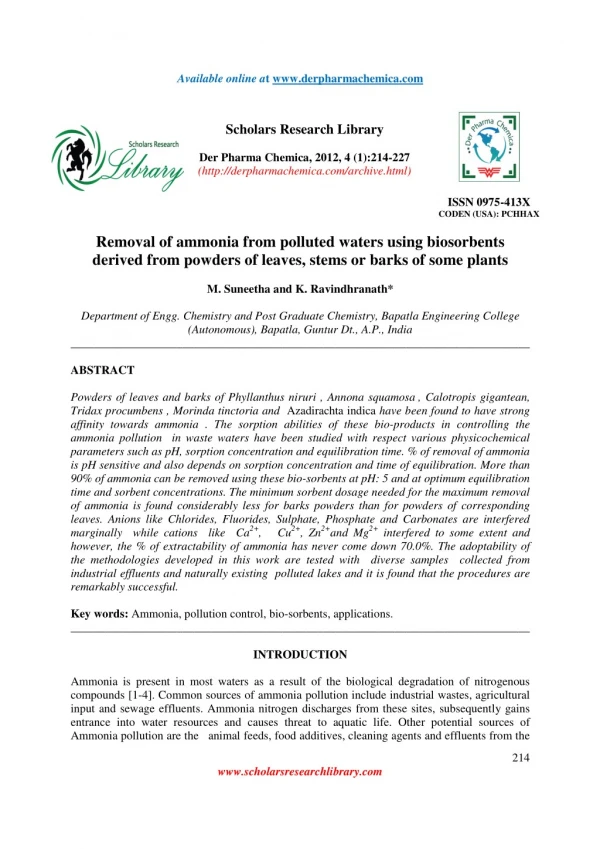Removal of ammonia from polluted waters using biosorbents derived from powders of leaves, stems or barks of some plants
Powders of leaves and barks of Phyllanthus niruri , Annona squamosa , Calotropis gigantean, Tridax procumbens , Morinda tinctoria and Azadirachta indica have been found to have strong affinity towards ammonia . The sorption abilities of these bio-products in controlling the ammonia pollution in waste waters have been studied with respect various physicochemical parameters such as pH, sorption concentration and equilibration time. % of removal of ammonia is pH sensitive and also depends on sorption concentration and time of equilibration. More than 90% of ammonia can be removed using these bio-sorbents at pH: 5 and at optimum equilibration time and sorbent concentrations. The minimum sorbent dosage needed for the maximum removal of ammonia is found considerably less for barks powders than for powders of corresponding leaves. Anions like Chlorides, Fluorides, Sulphate, Phosphate and Carbonates are interfered marginally while cations like Ca2 , Cu2 , Zn2 and Mg2 interfered to some extent and however, the % of extractability of ammonia has never come down 70.0%. The adoptability of the methodologies developed in this work are tested with diverse samples collected from industrial effluents and naturally existing polluted lakes and it is found that the procedures are remarkably successful.
★
★
★
★
★
186 views • 14 slides

